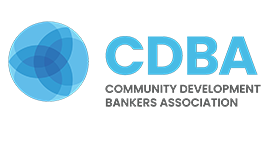Community Development Banking News
CDFI Banking: Industry, Policy, and Beyond.
Durham, N.C. was once known nationally for its "Black Wall Street," a cluster of flourishing black-owned financial institutions and businesses. In the 1960s that energy dissipated in the wake of urban development, but still the city held on to a large number of black owned businesses. Now, propelled by a national fellowship program, the city of Durham is building a plan and a set of tools to help preserve black-owned businesses in the face of an aging baby boomer generation, a new knowledge economy, and 21st-century business model shifts that traditional entrepreneurs may ignore.
The OCC received more than 1,300 comments on its advance notice of proposed rulemaking asking for responses on how to expand the 1977-era CRA, which grades banks on lending to low-to moderate-income communities in their branch networks. Opinions about the proposed rulemaking notice vary. Many in the industry have lauded the step taken by the agency, which insists it was merely trying to gather feedback. But some stakeholders say the agency's questions reflected its policy leanings.
Money worries are a top concern for American workers, with the stress often distracting them from the job. As a result, companies are realizing the need to provide better financial literacy and services for their employees. To support this need, Spring Bank has recently begun partnering with businesses to offer its Employee Opportunity Loan program. The program provides loans to employees at participating companies of up to $2,500 with no minimum credit score requirement as alternative to payday loans and other high-interest financial options.
CDBA is proud to announce that the W.K. Kellogg Foundation has funded CDBA's Small Business Impact at Scale Initiative with a $500,000 grant. The initiative, in partnership with Partners for the Common Good (PCG), focuses on building the capacity of CDFI banks to measure, assess, and communicate the impact of their small business lending. With the grant, the initiative will expand to help CDFI banks identify common business impact indicators, provide shared training and exchange of best practices, and pilot new models for efficient data collection on their over $4 billion in business loans.
Pedro Bryant, Chairman, President, and CEO of Metro Bank, has been elected to the board of directors of the American Bankers Association (ABA). The new board was announced on October 23, 2018 at the ABA National Convention in New York City. "I am honored to have been elected to the board of directors," said Bryant. "This is an exciting time for the banking industry and the ABA is leading the way in helping shape policy decisions that impact banks and the communities they serve."
Low-income communities across the country are set to benefit from a new federal rule designed to encourage economic development. Tax benefits will accrue to investors who put money into projects located in thousands of districts designated as Opportunity Zones. This in turn could stimulate more construction lending at a time when overall CRE lending has stagnated. Projects that otherwise would not get a second glance may now be appealing, said Roger Shumway, chief credit officer at the $1.3 billion-asset Bank of Utah in Ogden. "I see it opening up some areas that we haven't had before," Shumway said. "I can see it helping us quite a bit."
Amalgamated Bank will begin tracking the carbon emissions it is financing through its $3.4 billion loan portfolio, using as a guide the science that would limit global warming to 2 degrees Celsius, which is the goal of the Paris accord. Amalgamated, whose largest shareholder is the Workers United union, will also start measuring the carbon profile of new potential debt issues, as a way to evaluate borrowers' exposure to potential future carbon constraints. Amalgamated plans to work with the Global Alliance for Banking on Values to develop a carbon-accounting system similar to one used by some European banks.
From October 24th-25th, CDBA hosted its first Mississippi Delta bus tour. Over 70 people representing the Federal Housing Finance Agency, Fannie Mae, Freddie Mac, and local CDFI banks and housing associations were in attendance. The bus tour included site visits of highly distressed communities in the Delta, LIHTC neighborhoods, a manufactured housing production facility, rehabilitated historical apartment complexes, and more. The subsequent roundtable discussion in Indianola brought together federal and local stakeholders to discuss the state of single family housing, multifamily housing, manufactured housing lending, and financial literacy and homeownership counseling in the Delta.
The National Federation of Community Development Credit Unions has changed its name to Inclusiv. The Inclusiv name grows out of the organization's commitment to financial inclusion and its dedication to ensuring access to responsible financial products and services delivered at an affordable cost in a fair and transparent manner. The announcement was made at the organization's Annual Conference in Clearwater, Florida. "Inclusiv will build on the 44 year legacy of the Federation to grow the visibility and impact of mission-driven credit unions," said Cathie Mahon, Inclusiv President and CEO.
Sullivan Progress Plaza was the nation's first shopping center operated by African Americans when it was built in 1968 under the direction of the late Rev. Leon Sullivan. Additionally, United Bank of Philadelphia, the city's only African-American owned bank, has operated a branch in the center since 1999 and is one of the plaza's oldest tenants. "Progress Plaza has really been our mainstay," said Evelyn Smalls, president and CEO of United Bank. "It meant a lot to bank being there and at the same time having accessibility to clients that we were attempting to bring into the financial system in a consistent way."
